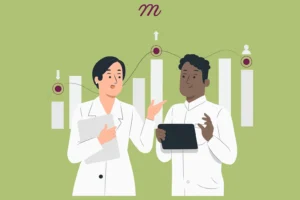The Agnew Relationship Measure-5 (ARM-5) is a brief, five-item questionnaire that represents a carefully crafted synthesis of the core elements that define therapeutic alliance, designed specifically for the realities of contemporary clinical practice.
Unlike lengthy assessment batteries, the ARM-5 takes a few minutes to complete. Its questions feel natural and relevant, capturing the essential dimensions of alliance, the bond between therapist and client, their sense of partnership, and confidence in the therapeutic process, without overwhelming either party.
The therapeutic alliance is maybe one of the most consistent predictors of successful treatment outcomes across all forms of psychotherapy. Research spanning decades has shown that the quality of the relationship between therapist and client is a fundamental mechanism of change itself. When clients feel understood, supported, and genuinely connected to their therapist, they’re more likely to engage deeply in the therapeutic process and achieve meaningful progress.
Development and Background of the Agnew Relationship Measure-5
Origins and Purpose of the ARM-5
Work on the ARM-5 started when the team noticed a clear gap in everyday clinical care. Although scholars had long highlighted how vital the therapy relationship is, the full 28-item Agnew Relationship Measure simply took too much time for most clinics.
The original ARM, developed in 1998, provided detailed assessment across five dimensions: Bond, Partnership, Confidence, Openness, and Client Initiative. While psychometrically great, its length made regular administration challenging because of time constraints.
In order to reduce the administrative burden and maintain the ARM’s psychometric strength, Cahill and colleagues attempted to develop short forms. Their objective was to create “a very short index of the core alliance construct that could be used as a clinical decision tool to track alliance in busy practice settings.”
Rasch analysis was one of the advanced statistical methods used in the development process to determine which items best differentiated between various alliance strength levels. This careful selection made sure that the ARM-5 would keep the accuracy required for clinical decision-making even though it was brief.
Comparison with the Original 28-Item ARM and ARM-12
With multiple items evaluating each theoretical component, the original 28-item ARM offered thorough coverage of alliance dimensions. Reducing the measure to 12 items while maintaining four separate subscales—Bond, Partnership, Confidence, and Openness—the intermediate ARM-12 was a first step toward practical brevity.
By combining Bond, Partnership, and Confidence into a single “Core Alliance” scale, the ARM-5 further simplifies the concept. This choice was made in light of research that revealed these dimensions had a very strong correlation.
Most importantly, there is no loss of significant information as a result of this condensation. The short ARM-5 captures practically the same information as its longer counterparts, according to statistical analyses.
Structure and Components of the Agnew Relationship Measure-5
The Five Items Explained
Every item in the ARM-5 was chosen with care to highlight an important component of the therapeutic alliance while still being understandable:
Item 1: “My therapist and I agree about how to work together/My client and I agree about how to work together”
This assesses task agreement and whether the client and therapist share an understanding of the chosen approach.
Item 2: “My therapist and I have difficulty working jointly as a partnership/My client and I have difficulty working jointly as a partnership”
Directly addresses the partnership dimension of alliance.
Item 3: “I have confidence in my therapist and his/her techniques/My client has confidence in me and my techniques”
This captures client confidence in the therapist and their approach.
Item 4: “My therapist is supportive/I feel supportive”
The item assesses the bond dimension—whether clients experience their therapist as caring and invested in their wellbeing.
Item 5: “My therapist is confident in him/herself and his/her techniques/I feel confident in
myself and my techniques”
This last item asks about the therapist’s self-confidence and competence.
Subscales: Bond, Partnership, and Confidence
Although the ARM-5 generates a single Core Alliance score, therapists can also interpret feedback if they know of the theories behind it:
Bond is the term used to describe the emotional bond between a therapist and their client, which includes sentiments of trust, respect, and care. The collaborative aspect of the therapeutic relationship, which includes mutual respect and shared decision-making, is reflected in partnership. Trust in the therapist’s skill and the efficacy of selected interventions are both components of confidence.
Since these constructs are practically interdependent, the ARM-5’s design creates a unified experience of alliance strength that is well captured by the single Core Alliance score.
Administering the Agnew Relationship Measure-5 in Clinical Practice
When and How Often to Use the ARM-5
Frequent administration is beneficial and feasible. Weekly administration during the early stages of therapy, when the alliance is developing and most susceptible to disruption, can be the way to go.
On weekly ARM-5 assessments, a therapist found that although her new client appeared involved during sessions, they consistently rated their alliance as weak. This disparity sparked a discussion in which the client expressed worry that therapy wasn’t solving their most urgent issues.
Biweekly or monthly administration may be adequate for established therapeutic relationships, with the possibility of increasing frequency during difficult times. Consistency and attentiveness to new alliance issues are crucial.
Methods of Administration: Paper vs. Digital
Paper administration is easy to use and accessible to many, making it a good choice for clients who prefer traditional formats or for practices with limited technology. Some clients value the automated scoring, electronic storage, and privacy that digital administration via tablets or portals provides.
It is always best to adjust it depending on the client’s preference.
Explaining the Agnew Relationship Measure-5 to Clients
Client receptivity can be impacted by the way therapists present the ARM-5. The following could be a good opening statement: “I’d like to start using a brief questionnaire to check in about how our work together is going from your perspective. It asks questions like whether you think we’re working well together and takes less than a few minutes. Your open feedback can help me improve.”
Directly addressing possible issues is beneficial: “Please respond truthfully—if something isn’t functioning properly, I need to know so we can fix it, and nothing you share will upset me.”
Scoring and Interpreting the Agnew Relationship Measure-5
Understanding the 7-Point Likert Scale
The ARM-5 uses a 7-point Likert scale that ranges from 1 (Strongly Disagree) to 7 (Strongly Agree). This range allows for nuanced feedback while remaining simple for clients to use. The scale’s midpoint (4) represents neutrality, and scores of 5-7 indicate increasing agreement and 1-3 reflect increasing disagreement.
Calculating Total and Subscale Scores
There are two types of scores: the raw score (5 to 35) and the average (1 to 7). Scoring involves two simple steps. First, reverse-score item 3 by subtracting the client’s response from 8. Next, add all the scores; that is the raw score. Finally, calculate the average of all five items to get the Core Alliance score. For example, if responses were Item 1=6, Item 2=5, Item 3=2 (reverse-scored to 6), Item 4=7, and Item 5=6, the Core Alliance score would be 6.0.
Interpreting Scores to Assess Therapeutic Alliance
Strong alliances usually produce scores between 5.5 and 7.0, with little variance over time. Although they might work well, moderate alliances (4.0–5.4 range) are still susceptible to disruption. Attention must be given right away to weak alliances (below 4.0).
Most importantly, even when absolute scores are still acceptable, sudden score drops (0.5 points or more) can indicate alliance breaks. When a client’s scores suddenly drop to 5.2 after consistently scoring around 6.0, it may indicate alliance strain that needs further investigation.
Psychometric Properties of the Agnew Relationship Measure-5
When comparing the ARM-5’s psychometric qualities to the full 28-item Agnew Relationship Measure, Cahil et al. (2011) discovered that it had respectable levels of alternative forms reliability and internal consistency. Validity studies have been conducted mainly about the long form of the test, but the developers underline its convergence with the original form.
Benefits of Using the Agnew Relationship Measure-5
Enhancing Therapeutic Alliance
Frequent ARM-5 administration opens up multiple possibilities for improving alliances. The evaluation itself conveys that therapists are concerned about the quality of their relationships and that the client experience is important.
Targeted alliance interventions are guided by the particular feedback. Therapists can concentrate on increasing client participation in treatment planning when scores indicate partnership issues. When bond problems arise, focus can turn to relationship development and empathy.
Facilitating Feedback-Informed Treatment (FIT)
The ARM-5 regularly provides information about the therapeutic relationship, making it an important part of feedback-informed treatment approaches. Changes can be implemented using both outcome measures and the ARM-5, discovering cases where symptom improvement could be masking alliance problems and others where strong alliances sustained clients through temporary setbacks.
Identifying and Addressing Alliance Ruptures
Early rupture detection may be the most clinically useful application of the ARM-5. Alliance problems are common but often go unnoticed until they have a significant negative influence on treatment. Early intervention is made possible by the ARM-5’s sensitivity when scores abruptly or gradually decline.
For example, over the course of two sessions, the ARM-5 scores of a client decreased from 6.2 to 4.8. When questioned, the client disclosed that they felt criticized by earlier comments. By admitting the damage, the therapist healed this break. This rupture might have gone untreated if the ARM-5 data hadn’t been available.
Challenges and Considerations
Client Reluctance or Bias in Responses
At first, some clients might object to these assessments or give biased answers. Reluctance is typically decreased when clients are educated about the goal and advantages and it is emphasized that feedback enables therapists to deliver better care.
Response bias needs to be managed with subtlety. It is important to know that this scale has a ceiling effect, which means that clients usually rate therapists higher. While consistently low scores may reflect general negativity, consistently high scores across all clients may indicate social desirability bias.
Time Constraints in Sessions
Because the ARM-5 is so brief, it saves time while still offering useful information. Clients can even complete it in waiting areas, at the conclusion of sessions, or as homework in between sessions.
Ensuring Accurate Interpretation of Feedback
It is necessary to carefully interpret ARM-5 scores in light of the larger clinical context. A number of factors are taken into account for effective interpretation, including client characteristics, the therapeutic phase, absolute score levels, and score patterns over time. Instead of replacing clinical judgment, the measure offers information to support it.
Integrating Agnew Relationship Measure-5 Feedback into Therapy
Responding to Client Scores
The ARM-5’s clinical value is greatly influenced by the way therapists react to its feedback. “I noticed your ratings suggested some concerns about how we’re working together,” could be a good way to respond when scores indicate alliance issues. “Could you tell me what’s not functioning as well as it should?”
Positive comments can also help “I’m happy that our collaboration is making you feel good. What in particular has been most beneficial?” The secret is to view ARM-5 scores as a starting point for discussion rather than as definitive assessments.
Adjusting Therapeutic Approaches Based on Feedback
Certain therapeutic modifications can be guided by ARM-5 feedback. Issues with the partnership may lead to more client participation in treatment planning. Increased empathy and focus on the relationship itself often address bond issues. Issues with confidence might call for alternative interventions or psychoeducation regarding the therapeutic approach.
Collaborative Goal Setting with Clients
The ARM-5 feedback can lead to improvement in goals. The therapist and client may decide to check in more frequently regarding the direction of treatment when partnership scores are low. Objective feedback regarding improvement efforts is provided by regular goal reviews using subsequent ARM-5 scores.
Comparisons with Other Alliance Measures
ARM-5 vs. Session Rating Scale (SRS)
Although they are both quick instruments for evaluating the therapeutic alliance, the ARM-5 and the Session Rating Scale (SRS) vary in their depth and focus. At the conclusion of each session, clients and carers can provide real-time feedback using the SRS, a four-item visual analogue scale that helps detect and address alliance issues early.
ARM-5 vs. Working Alliance Inventory (WAI)
The Working Alliance Inventory remains the gold standard with extensive research support, but its length limits routine clinical use. While the ARM-5 hasn’t been directly compared to the WAI, the original ARM demonstrated convergent validity with this established measure.
Selecting the Appropriate Tool for Your Practice
Tool selection depends on the practice environment, clientele, time constraints, and clinical objectives . The efficiency of the ARM-5 is advantageous for high-volume practices, but more thorough evaluation may be necessary for specialized treatments or research settings. Above all, any methodical evaluation of an alliance is better than depending only on clinical intuition.
Frequently Asked Questions (FAQs)
What is the ARM-5 used for?
In individual therapy, the ARM-5 is a quick, session-by-session assessment of therapeutic alliance that offers frequent feedback to inform clinical judgments and enhance therapeutic results.
How is the ARM-5 different from other alliance measures?
The ARM-5’s distinguishing features include its brevity, rigorous psychometric development using advanced statistical techniques, and focus on core alliance dimensions while maintaining strong correlations with comprehensive measures.
Can the ARM-5 be used in group therapy settings?
The ARM-5 has not been validated in group therapy settings. The measure’s items focus on individual client-therapist relationships, which differs significantly from complex group dynamics.
Is the ARM-5 suitable for all client populations?
The validation data currently available comes from adult clients. Although the measure’s simple language suggests broad applicability, more research would be needed to determine whether it is appropriate for other populations.
Conclusion
The ARM-5 is an important step toward making alliance assessment useful for everyday clinical use. Strong psychometric qualities are maintained while regular monitoring is made possible even in stressful clinical settings by condensing key alliance components into five well-chosen items.
In therapeutic relationships, the ARM-5 promotes a culture of feedback and ongoing development. Clients and therapists gain from more focused interventions, early problem identification, and heightened attention to relationship quality when alliance assessment is a regular practice.
References
Agnew-Davies, R., Stiles, W. B., Hardy, G. E., Barkham, M., & Shapiro, D. A. (1998). Alliance structure assessed by the Agnew Relationship Measure (ARM). The British journal of clinical psychology, 37(2), 155–172.
Cahill, J., Stiles, W. B., Barkham, M., Hardy, G. E., Stone, G., Agnew-Davies, R., & Unsworth, G. (2012). Two short forms of the Agnew Relationship Measure: the ARM-5 and ARM-12. Psychotherapy research : journal of the Society for Psychotherapy Research, 22(3), 241–255.
Duncan B. L., Miller S. D., Sparks J., Claud D., Reynolds L., Brown J., Johnson L., (2003). The Session Rating Scale: Preliminary psychometric properties of a “working” alliance measure. Journal of Brief Therapy, 3 (1), 3–12.
Why other mental health professionals love Mentalyc

“Reading transcripts helps me tighten up and come across more the way I want to present myself to clients … it’s helped me improve and keep getting better.”
Licensed Marriage and Family Therapist

“There is a lot more feedback and suggestions in it than before … that makes things a little bit easier for me.”

“It’s really giving me some good confidence … and areas of improvement to see nuances I didn’t see before.”

“Using Alliance Genie has really improved my notes … It tells me what I’m doing and gives me an approach of what’s next.”







